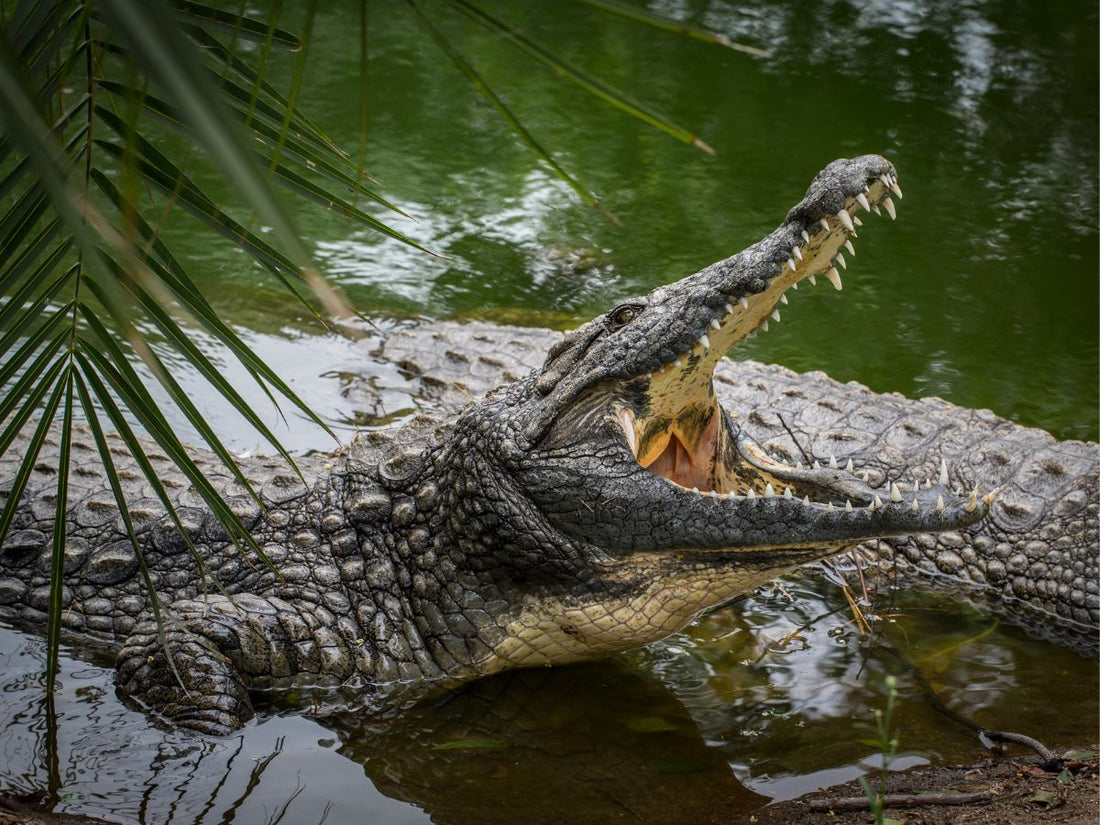
What is the difference between an alligator and a crocodile?
BY NAMUBAKShare
Crocodilians—a group that includes alligators, caimans, crocodiles, and gharials—are reptiles that have existed for more than 210 million years . Therefore, they are considered living fossils . There are currently 23 living species, distributed across three families:
- Alligatoridae : alligators and caimans
- Crocodylidae : crocodiles
- Gavialidae : gharials
Although alligators and crocodiles may look similar, there are clear differences in their appearance, habitat, behavior , and geographic distribution.
Alligator: characteristics and behavior
Alligators ( family Alligatoridae) are found primarily in freshwater. In the Americas, they are found from the southern United States to South America, including Costa Rica.
Main characteristics of alligators:
- Wide, rounded snout , “U” shaped.
- When you close your mouth, only your upper teeth are visible.
- Thick skin with bony plates beneath the surface (osteoderms).
- Good swimmer thanks to its flattened tail and webbed hind legs.
- They tend to be less aggressive than crocodiles.
- They do not have functional salt glands, so they prefer fresh water.
- They have sensory pits only around the jaw.

Crocodile: characteristics and behavior
Crocodiles ( family Crocodylidae ) have a wider distribution and can live in both fresh and salt water. They are found in Africa, Asia, the Americas, and Australia.
Main characteristics of crocodiles:
- Slimmer, pointed snout , V-shaped.
- When you close your mouth, you can see both your upper and lower teeth.
- They have functioning salt glands, so they tolerate salt water better.
- Its sensory pits are distributed throughout the body.
- They tend to be more aggressive and territorial than alligators.
- They have a great diversity of size, from small species to specimens of more than 7 meters .

Difference between an alligator and a crocodile
| Feature | Caiman | Crocodile |
|---|---|---|
| Muzzle shape | Wide and rounded (U-shaped) | Narrow and pointed (V-shaped) |
| Type of water | Fresh water | Fresh and salt water |
| Visible teeth | Only the superiors | Superiors and inferiors |
| Salt glands | Non-functional | Functional |
| Sensory pits | Only in the jaw | All over the body |
| Behavior | More reserved | More aggressive |

What species of crocodiles are there in Costa Rica?
Two main species of crocodiles live in Costa Rica: the American crocodile ( Crocodylus acutus ) and the caiman ( Caiman crocodilus ), also known locally as the cuajipal or guajipal . Both species are essential to the ecosystems of rivers, lagoons, and wetlands on both the Caribbean and Pacific coasts, as well as in the northern part of the country.
Species present:
- American alligator ( Crocodylus acutus ):
It can grow up to 6 meters long and is completely carnivorous . It is one of the largest crocodile species in the world and can inhabit both fresh and brackish water. - Caiman ( Caiman crocodilus ):
Smaller than the crocodile, it typically measures between 1.5 and 2.5 meters . It is more common in freshwater areas and is recognized by its wider snout and less aggressive behavior.

Geographic distribution:
Both species are widely distributed in the country:
- Present on the Pacific and Atlantic slopes .
- Common in areas such as the Tárcoles River , and national parks such as Palo Verde and Tortuguero .
Are crocodiles overpopulated in Costa Rica?
No. There is no crocodile overpopulation in Costa Rica. What has increased in recent years is the interaction between humans and crocodiles , a result of urban and tourist growth in coastal areas where these species have lived for centuries.
Safety recommendations
When visiting areas where crocodiles or alligators live, it is essential to take precautions:
- Do not feed them under any circumstances.
- Do not approach them if they are on land.
- Do not enter the water in places where they are known to live.
- Maintain a safe distance, especially in spawning or breeding areas.
-
If you are traveling with pets or children, always keep them under close supervision.
These recommendations apply to both alligators and crocodiles, since although the alligator is generally less aggressive, both can pose a danger if threatened.
The difference between alligators and crocodiles goes beyond physical appearance. Understanding their behavior, distribution, and ecology allows us to coexist with these species responsibly , especially in a country as biodiverse as Costa Rica.
More than differences: the importance of protecting crocodiles
Want to learn more about the country's wildlife and how to protect it? Explore our nature conservation content and visit our online store for sustainable products inspired by Costa Rica's wildlife.

